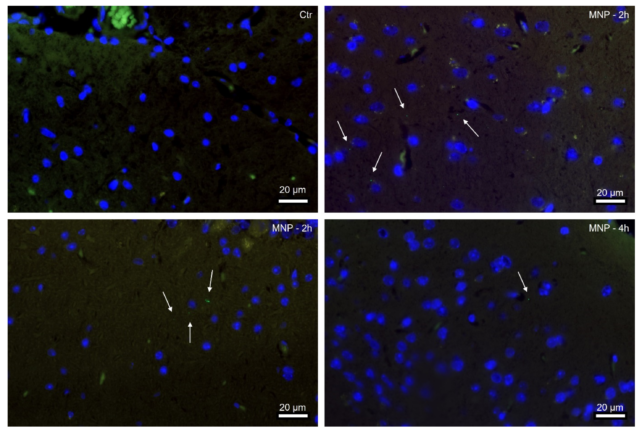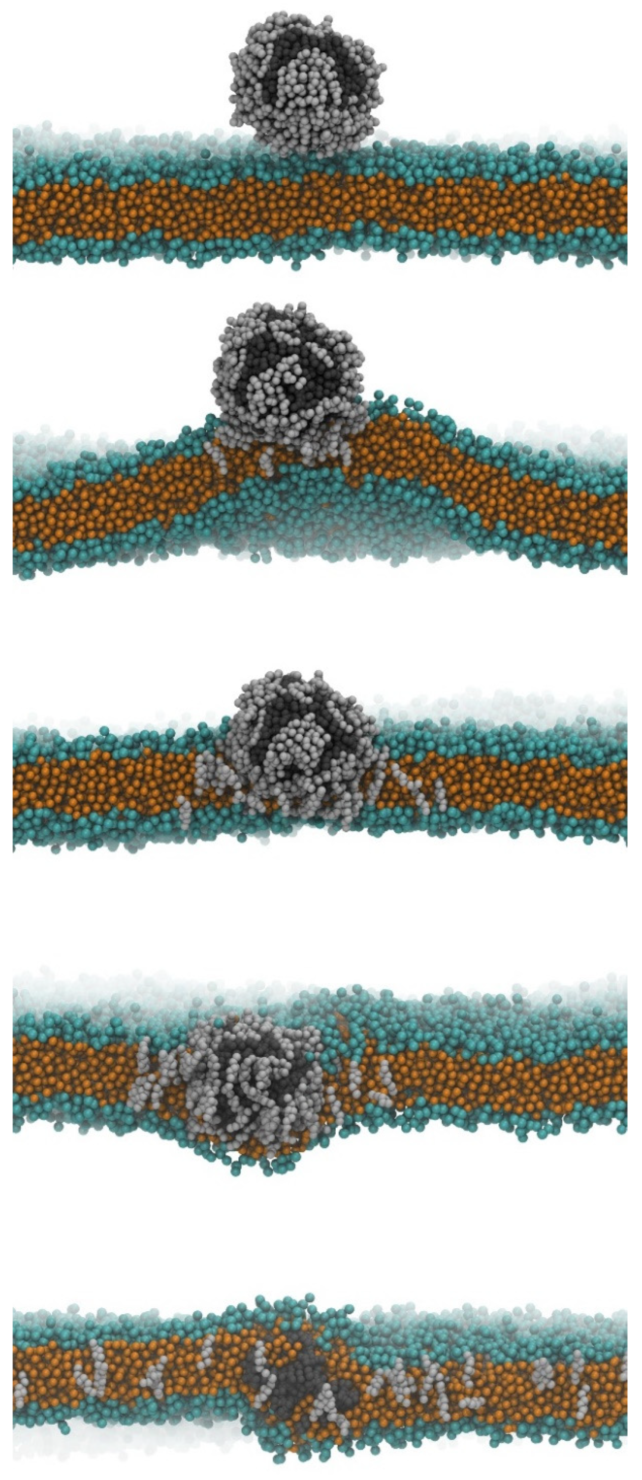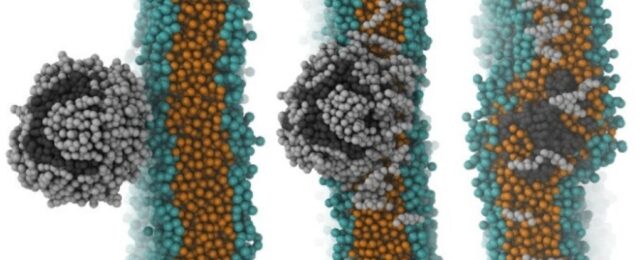Thanks to their flexibility, durability, and affordability, plastics have oozed their way into just about every aspect of our lives.
When these items do eventually break down, the resulting micro- and nanoplastics (MNPs) can harm wildlife, the environment, and ourselves. MNPs have been found in blood, lungs, and placenta, and we know that they can get into our bodies through the food and liquids we consume.
A new study by a team of researchers from Austria, the US, Hungary, and the Netherlands has found MNPs can reach the brain a few hours after being eaten, possibly thanks to the way other chemicals stick to their surface.
Not only is the speed alarming, the very possibility of tiny polymers sliding into our nervous system raises some serious alarm bells.
"In the brain, plastic particles could increase the risk of inflammation, neurological disorders or even neurodegenerative diseases such as Alzheimer's or Parkinson's," says co-senior author of the study, pathologist Lukas Kenner from the Medical University of Vienna in Austria.
In the study, tiny fragments of MNPs orally administered to mice were detectable in their brains in as little as two hours. But how do MNPs get through the blood-brain barrier, which is supposed to keep the brain safe?
As a system of blood vessels and tightly packed surface tissue, the blood-brain barrier helps shield our brains from potential threats by blocking the passage of toxins and other undesirables, while permitting more useful substances across. It stands to reason that plastic particles would count as a material to keep well and truly out of the brain's sensitive tissues.
"With the help of computer models, we discovered that a certain surface structure (biomolecular corona) was crucial in enabling plastic particles to pass into the brain," explains co-senior author Oldamur Hollóczki, a nanoplastics chemist at the University of Debrecen in Hungary.

To verify that the particles truly can enter the brain, polystyrene (a common plastic used in food packaging) MNPs in three sizes (9.5, 1.14, and 0.293 micrometers) were labeled with fluorescent markers and pretreated in a mixture similar to digestive fluid before being fed to mice.
"To our surprise, we found specific nanometer-sized green fluorescent signals in the brain tissue of MNP-exposed mice after only two hours," the researchers write in their published paper.
"Only 0.293 micrometer sized particles were able to be taken up from the gastrointestinal tract and to penetrate the blood brain barrier".
How these tiny, blanketed plastics cross cell barriers in the body is complicated and depends on factors like particle size, charge, and cell type.
Tinier plastic particles have a higher surface area-to-volume ratio, making them more reactive and potentially more hazardous than larger microplastics. This reactivity is thought to allow the small bits of plastic to gather other molecules around them, hugging them tight with molecular forces to form a durable cloak called a corona.
The researchers created a computer model of a blood-brain barrier out of a double lipid membrane composed of a phospholipid found in the human body, to study how particles could cross the all-important neurological barrier.

Four different plastic models were used to study the role of the plastic particle' corona. The simulations showed that particles with a protein corona couldn't enter the barrier. However, those with a cholesterol corona could cross, even if they couldn't progress deeper into brain tissue.
The results raise the possibility that plastic can be transported across the membrane and into the brain tissue with the help of the right molecular cocktail. Knowing the fundamental mechanisms is an important first step in managing their harmful effects.
It is important to note the results are based on mice and computer simulations, so it is unclear if the same behavior occurs in humans. It's also unclear how many plastic particles are needed to cause damage. Yet knowing it's possible for coated plastic particles to breach the blood-brain barrier within such a short period advances research in this area, according to the authors.
"To minimize the potential harm of micro- and nanoplastic particles to humans and the environment, it is crucial to limit exposure and restrict their use while further research is carried out into the effects of MNPs," says Kenner.
The research has been published in the journal Nanomaterials.
